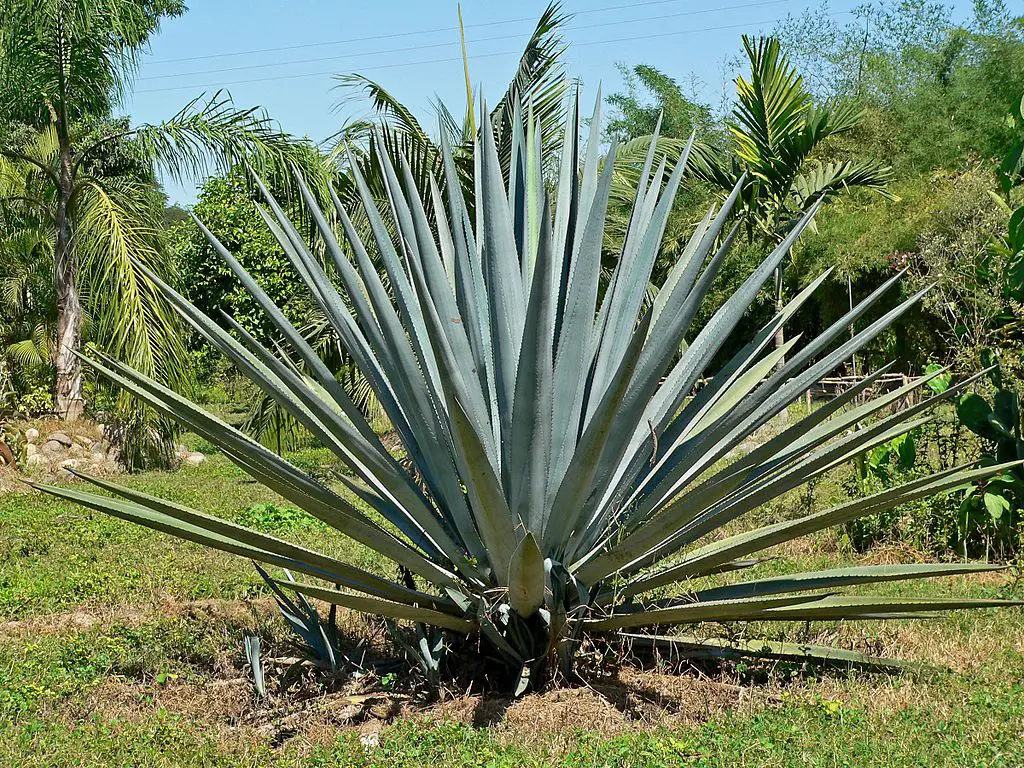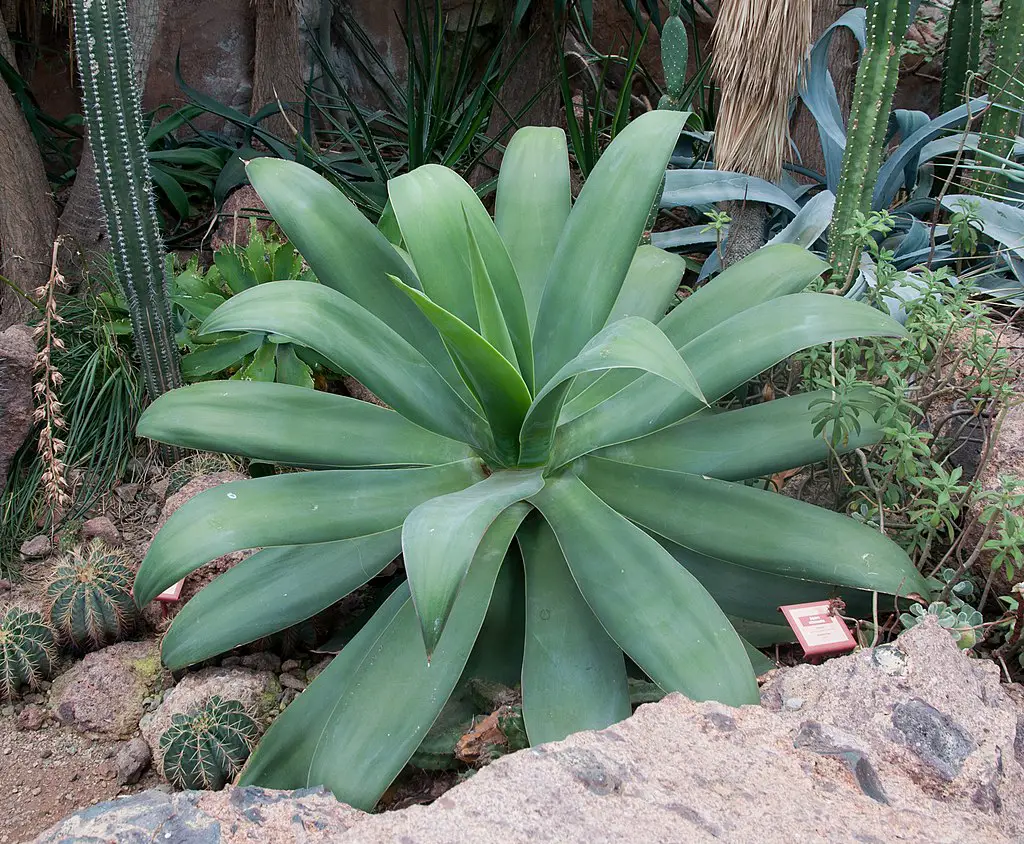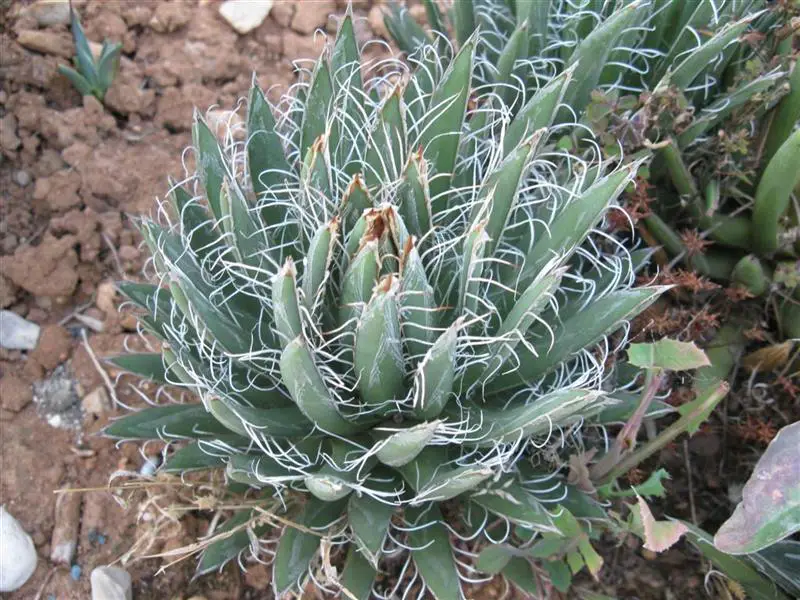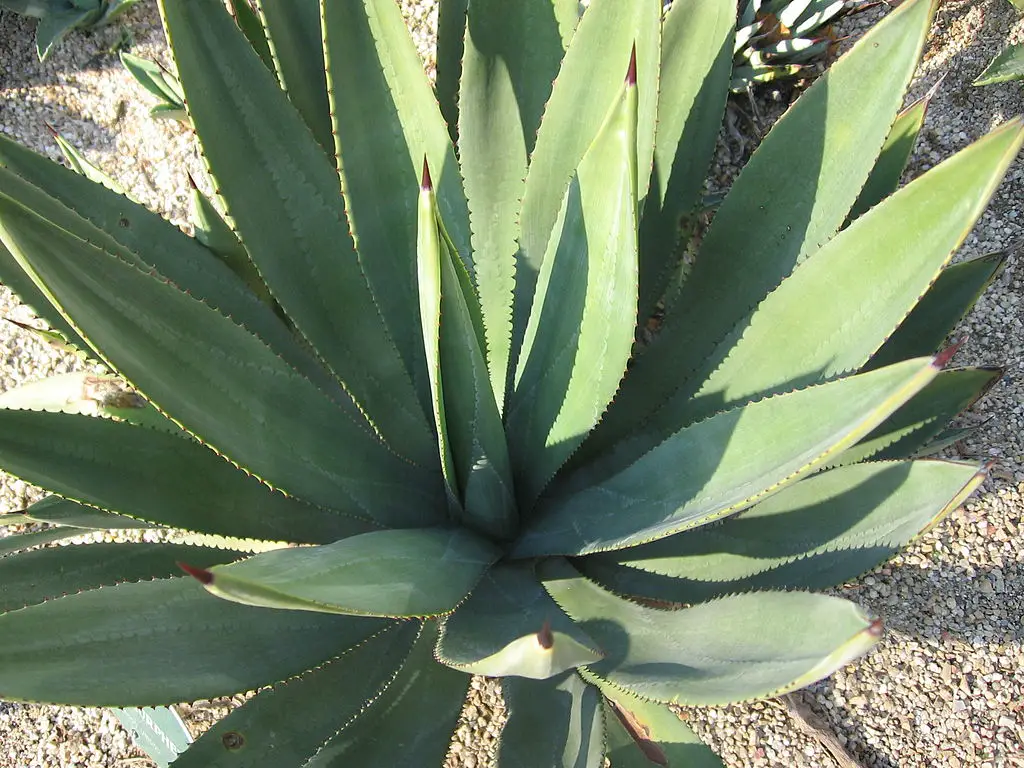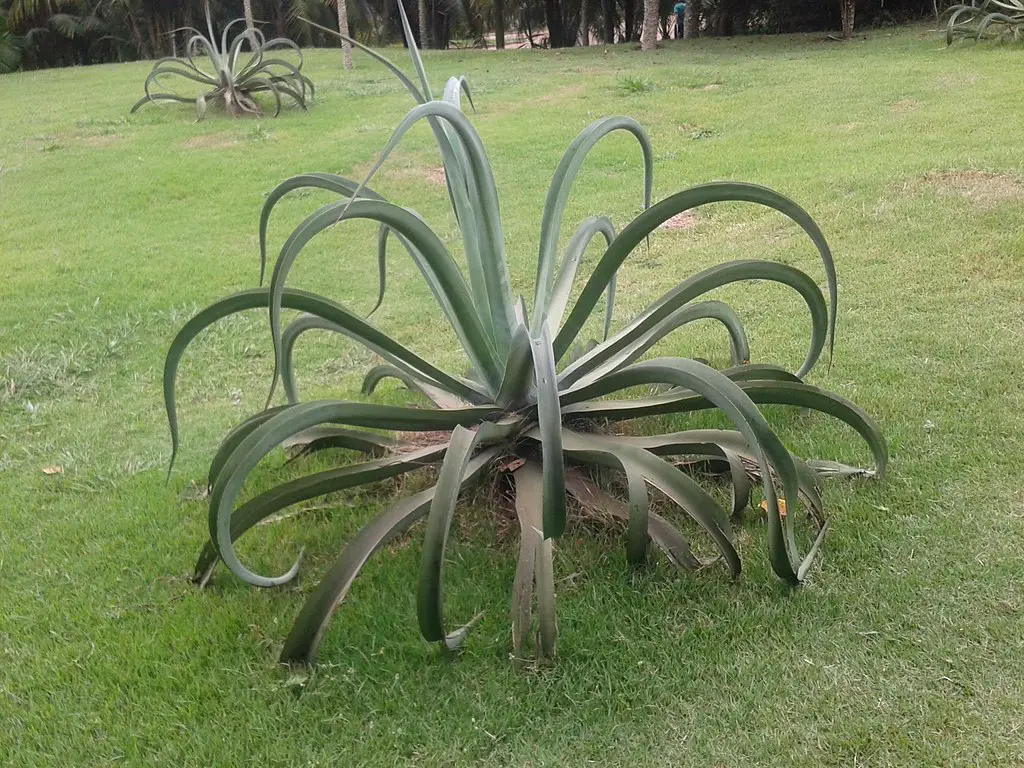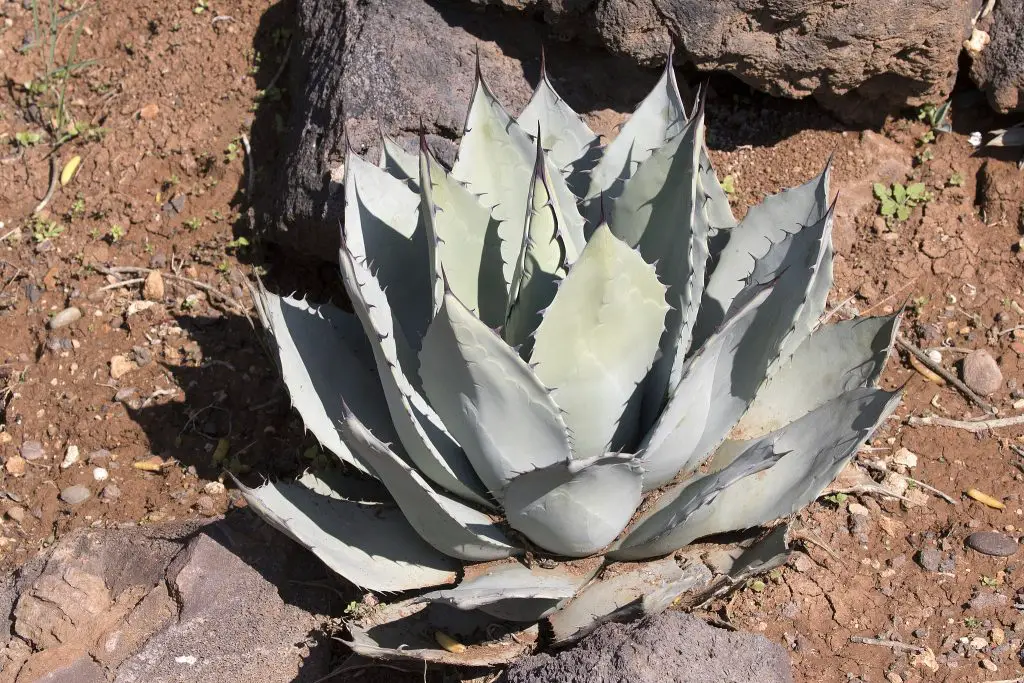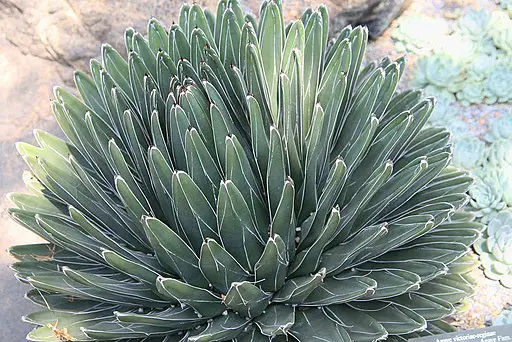What is the Difference Between a Cactus And An Agave? Although many people may use the terms cactus and agave interchangeably, the two plant species are not exactly the same. However, it’s understandable that you might use them in the same way as they have similar physical features that can cause confusion.
Cactus and Agave plants are both succulents which means that they are plants that store water in their leaves or stems. However, the Cactus and Agave come from distinct plant families and are not closely related. The most obvious difference is that plants in the cactus family do not have leaves and store water in their stems, whereas Agave has thick leaves that protrude from a central point. An example of this can be seen with the Agave Americana which is shown in the image below.

Agave And Cacti Common Characteristics
The reason why it is easy to mix up the two types is there is a common misconception that all succulents are cacti, however, cactus plants are just a type of succulents and don’t belong to the same family of plants as the agave. However, both plants originated in the Americas and evolved in dry regions such as Mexico, as such they share some general characteristics.
Apart from being highly drought-tolerant, due to their ability to store water in their leaves and stems, both plants have a spiky prickly nature which discourages animals from eating them. However, the spines or thorns that you see on both plants are different because the agave’s spiky parts line the side or the end of the leaves whereas the cactus spines come from the indentations in their stems known as the areoles. The position of the spines is sufficient to tell the two plants apart when you look at the plant closely.
However, not all species of agave have spines running down the side of the plant. An example of this is the Agave azul which only has a spike on the end of the plants, see the image below.
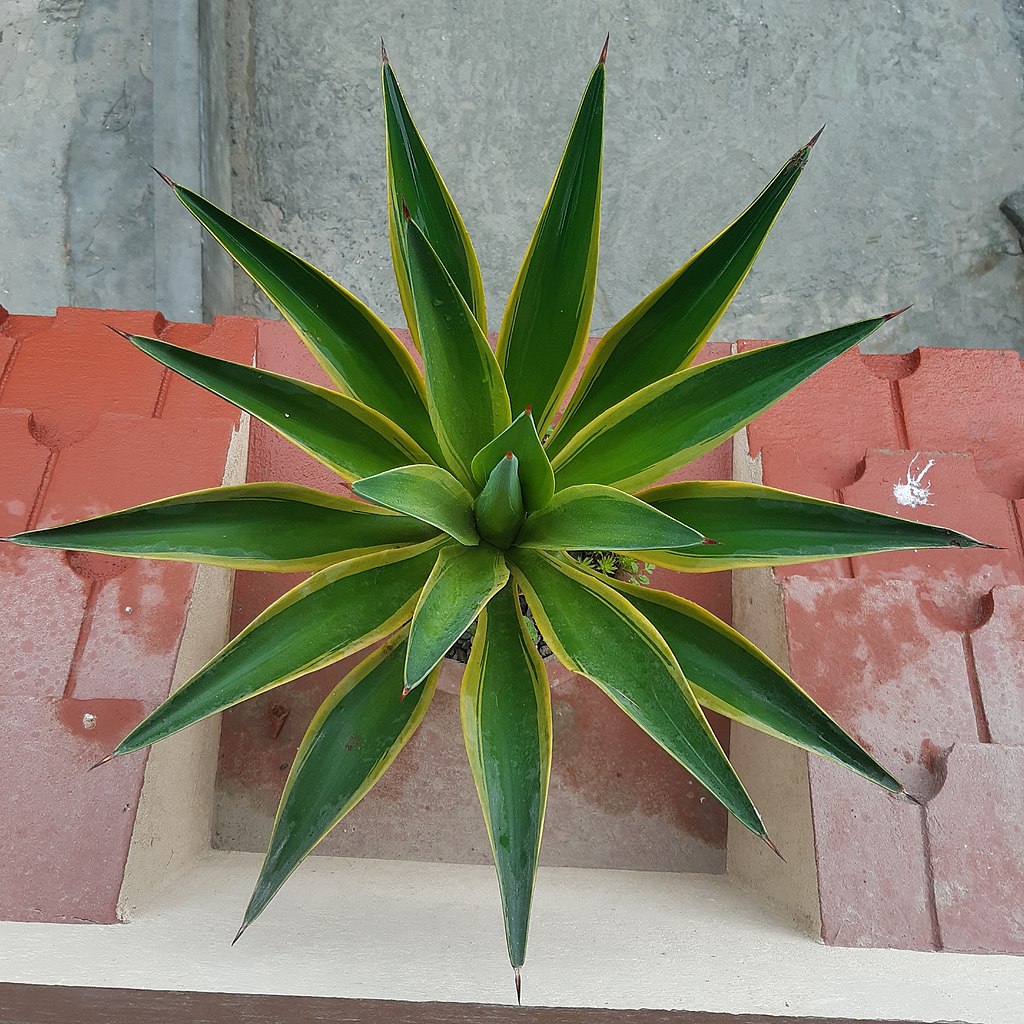
What Are The Difference Between Agave and Cacti?
When trying to tell the difference between the two types of plants, cacti have a few distinguishing features that are easily used to set them apart. Typically cacti have no leaves or only a few leaf-like protrusions additionally they are also distinguishable by the rounded indentations on their stems.
These are modified buds which are known as areoles. This is where the spines of the cacti emerge, which is what gives them their characteristic appearance. In addition to producing the spikes, the areoles are also the point at which flowers emerge. This most commonly happens in summer every year once the plant reaches 3 to 4 years old for most species.
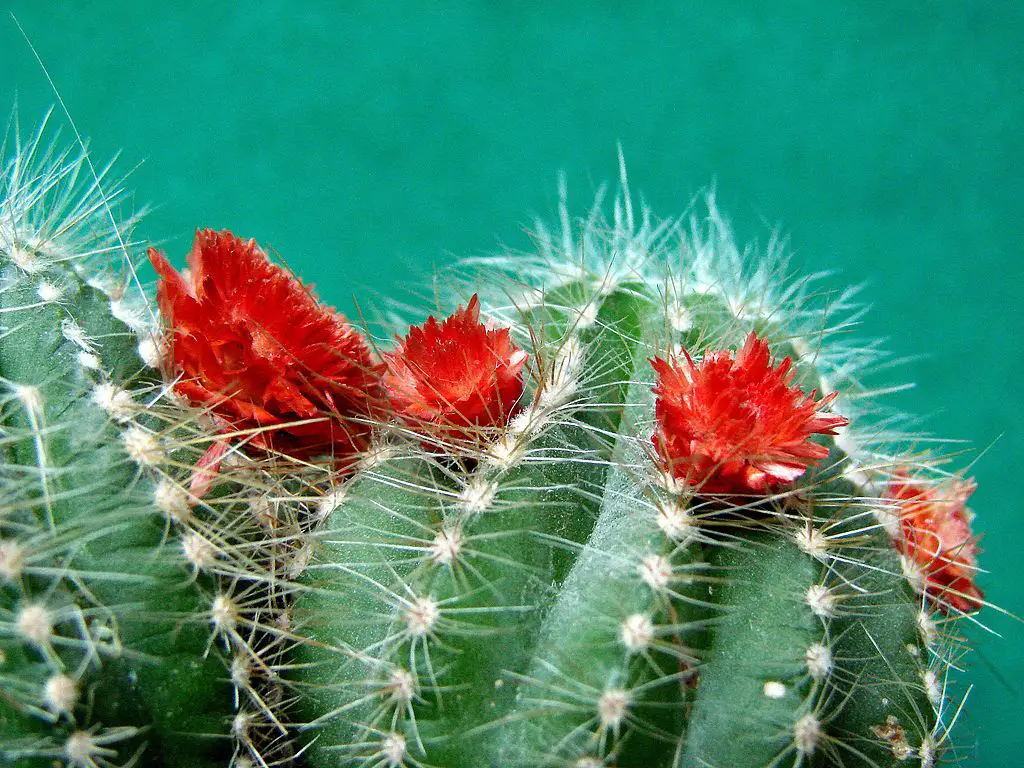
However, the agave plant flower once during their lifetime and then die. When the bloom occurs the agave will produce a flower stalk that are incredibly tall when compared to the plant, see the image below. These stakes come in branched and unbranched forms with each branch producing a cluster of flowers.
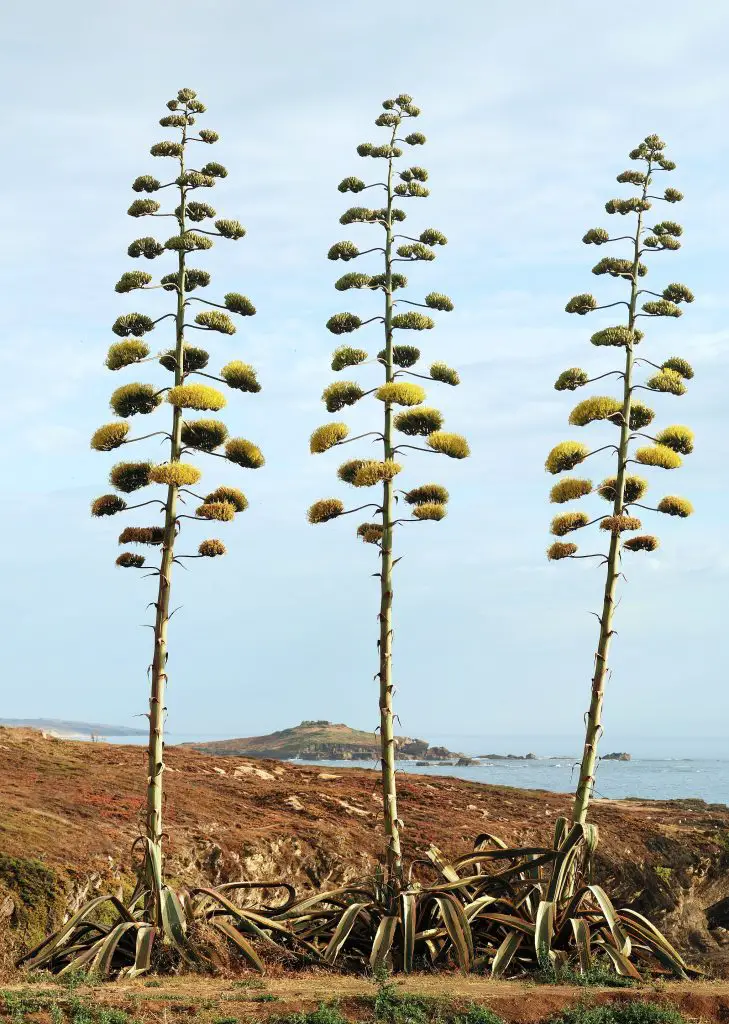
Once the flower dies back so too does the foliage of the plant but the plant needs to be at least 10 years old before it will flower and there are some varieties that will last a couple of decades before producing any flowers. However, most varieties start to produce pups in the year prior to flowering which means that there are new plants ready to replace the old ones.
The number of pups produced is often very high and overcrowding of the plant is common but pups can be transplanted into other parts of the garden. However, removing the pups from the more plant can be sometimes challenging due to the number of spines.
Plants Commonly Mistaken for Cacti or Agaves
Just because you can tell the difference between the two types of plants doesn’t mean that you won’t still run into other plants which look like either one. Aloe vera plants are a type of succulent that is frequently mistaken for cactus plants. Although if you’re comparing an agave and an aloe plant, it’s difficult to tell the difference. However, the leaves of the aloe are fleshy and if broken open they will release a clear gel that is often used for treating sunburn. The Agaves are more fibrous, and despite the fact that they store water, they will not secrete a gel in the same way.
Spotting the Key Differences
Although many plants are labeled with their type today, it may be harder to distinguish the plants when growing outside. Take a look at the structure of the plant, especially where the spines or prickly spots are growing. The plants can also be distinguished by their presence of leaves or lack thereof.
About Agave
The Agave genus contains over 300 different species that are all perennial succulents that originated in the southern parts of the USA and Mexico. The vast majority of these species have sword-shaped leaves with sharp teeth on the edges and generally much larger spines on the tips of the plants.
The root systems of the agave are quite shallow like cactus and consist of a network of rhizomes that allow the agave to efficiently capture moisture from rain, condensation, and dew. To help retain the moisture in the leaves they have a coating that prevents evaporation.
Images of some of the more common varieties are shown below.
